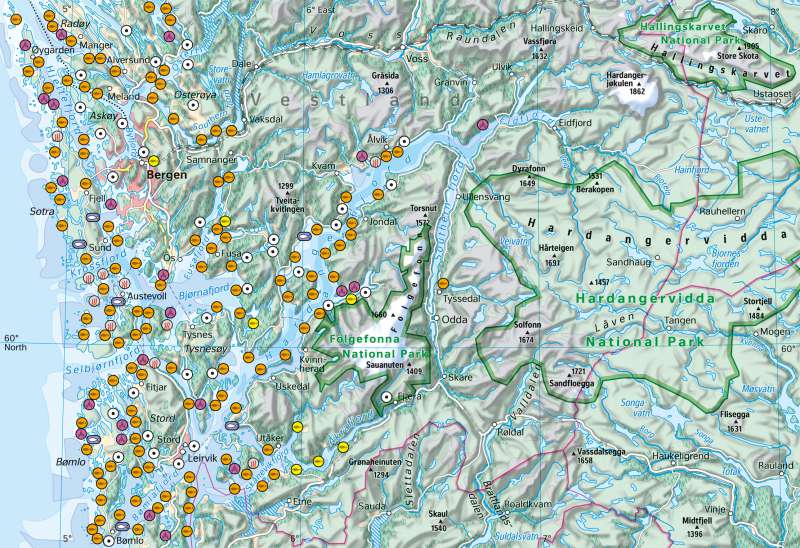Vestland (Norway) - Aquaculture in the fjords
Resources
978-3-14-100890-6 | Page 78 | Ill. 1

Overview
In global comparison, European countries do not play a leading role as fishing nations, with one exception – Norway. In 2018, the Scandinavian country was in ninth position worldwide in terms of marine capture production of fish and seafood, while Europe's number two – Iceland – occupied 17th position. Norway produced 3.85 tonnes of fish and seafood in 2018 of which 2.5 tonnes were captured and 1.35 tonnes were produced in aquacultures.
Norwegian aquaculture in international comparison
China has occupied the undisputed first place since the 1990s. The country produced a total of 60.3 million tons, about 80% of which, or 47.6 million tons, came from fish farms. China's dominant position is especially evident compared to the country in second place: Peru produced 7 million tons, only a small part of which was from aquaculture.
Taking into account fish farming alone, Norway was in as high as seventh place worldwide, an enormous achievement when set against countries like China, India, Indonesia and Vietnam. Norway advances even further when its fish industry is viewed from the export perspective. Here it takes second place between China and Vietnam, and in 2018 it earned more than 12 billion US dollars from the export of seafood. The share of aquaculture in export earnings has increased continuously.
Situation in Vestland
Hordaland used to be Norway's most important province for aquaculture. In 2020, Hordaland and Sogn og Fjordane merged into a single larger province, Vestland.
In 2019 over one-fifth of all salmon and trout from Norway were farmed there, i.e. 259,000 tons of salmon and 62,000 tons of trout. Most of them were exported, mainly to Russia, Denmark, France and Japan. Hordaland thus generates a large part of Norwegian fish export earnings.
The map shows the dense stock of fish farms in Vestland, the majority of which specialise in salmon. But there are also many farms that specialise in shellfish or seaweed and algae. From breeding tanks, the juvenile fish are distributed among a large number of tanks where they can mature for up to two years. Particularly suitable animals are selected for breeding purposes and transferred to tanks specially earmarked for the purpose. As soon as the fish have attained a sufficient size for consumption, they are slaughtered and processed in abattoirs. Hatcheries, brood chambers and fish slaughterhouses are also present in the area to allow an easy production cycle.
The intensive animal husbandry damages the environment: water quality deteriorates, and the natural habitat is reduced for fish living in the wild. Norway responded to this in 2003 and 2007 by designating a total of 52 national salmon rivers and 29 national salmon fjords, in which the most important salmon stocks were to be allowed to regenerate without interference from man. In these areas it is forbidden to farm any fish that migrate from salt water to fresh water to spawn – the salmon being the best known of these. Existing farms in the protected areas had to be closed by March 2011. Such a fjord can be identified on the map to the north-east of Bergen. Farms are also not allowed in National Parks in the area.




